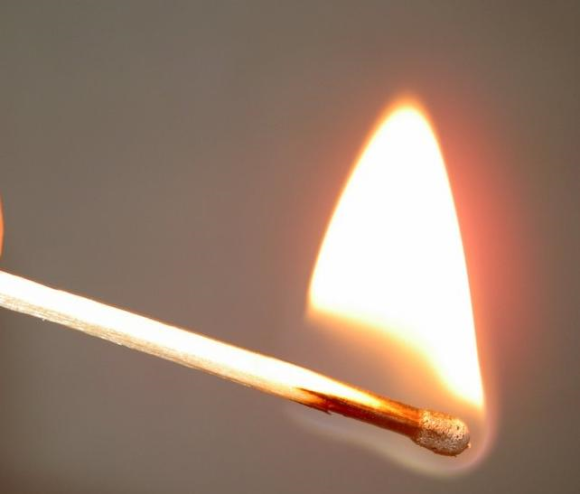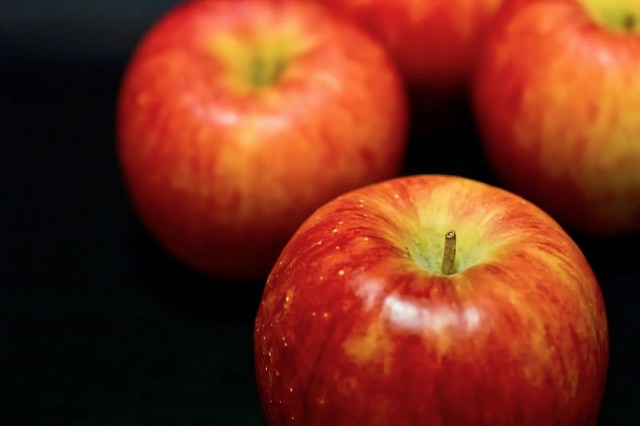
Just like they do in many other countries, adults in Japan like to periodically grumble about “kids today” and the simple things they can’t do that previous generations could. Sometimes we can sympathize with the exasperated grown-ups. After all, who doesn’t get frustrated when faced with one of these modern kids who can’t put in a full day’s work without whining, show his elders the respect they deserve, or start a fire by himself?
Wait, what was that last one again?
Zojirushi, the Osaka-based manufacturer of thermoses and kitchen appliances such as rice cookers and hot water dispensers, has released the results of a recent survey it conducted regarding the lifestyle and skills of elementary school students, which in Japan would be composed of children between the ages of six and 12. In May, the company polled 330 mothers of elementary school-age kids from in and around Tokyo, then compared their answers to those from a nearly identical study Zojirushi performed exactly 20 years earlier, in May of 1995.
Seeing as how Zojirushi is in the business of making machines and other items that perform kitchen tasks for their users, the questions were primarily focused on whether or not children could take care of such things themselves. The ostensible logic would be that anything the kids can’t do on their own is something their moms have to do for them, and wouldn’t it be nice if they could hand that chore off to a Zojirushi-manufactured product instead?
Overall, the mothers’ answers point to the kids of 2015 being quite a bit less handy in the kitchen than their 1995 contemporaries. While in 1995 50.7 percent of kids could open a can with a manual can opener, that number has since dropped to 20.7. Likewise, 36.3 percent of the mothers in the original study said their kids had the necessary coordination to peel an apple using a knife (since eating the skin of an apple is almost as unheard of in Japan as eating that of a grape), but a mere 10.1 percent of mothers today believe their children are up to the task.
But the biggest drop was seen when Zojirushi asked the mothers if their offspring could light a fire using a match. In 1995, this was apparently considered a fairly necessary ability for young kids, perhaps due to lower-tech cooking ranges requiring the flame to be manually lit, and 58.9 percent of kids could handle such low-level pyrotechnics.
In the latest survey, though, that figure plummeted to just 18.1 percent. Moreover, 68.8 percent of mothers said they’ve never asked their young children to perform the task for them. A bit of simple arithmetic tells us that a contrasting 31.2 percent of mothers have asked their kids to get a fire going, a figure much higher than the 18.1 percent of kids who could successfully do so.
▼ Zojirushi doesn’t specify whether that means 13.1 percent of kids couldn’t get the match to flare up or simply torched something other than what their moms wanted them to.
The easy scapegoat for this is kids’ increased contact with technology. After all, the more time they spend more time playing video games, talking on their cellphones, and wasting time/soaking up vital knowledge on the Internet, the less time they have for peeling apples, opening up delicious canned goods, and setting junk on fire like kids did in the good old days, right?
Except, comparing Zojirushi’s two surveys suggest that kids of today spend more time outdoors than they did 20 years ago. 79.7 of the 2015 mothers said their children often play outside, a noticeable increase from the 67.9 percent who said the same in 1995. And it’s not like the kids of 2015 are only stepping outside to look for free Wi-Fi hotspots or hunt augmented reality Pokémon either. 75.6 percent of 2015 mothers said their kids have “gotten covered with mud while playing,” while in 1995 only 72 percent did.
Hmm…an uptick in kids getting covered with mud because they played outside, and a drop in the number that can strike a match and light a fire. Maybe Japanese kids aren’t becoming less self-sufficient, but just clumsier.
Source: Mainichi Shimbun via Jin
Top image: Wikipedia/Heidas
Insert images: Pakutaso, Gatag/Jason Pero



 Flush with New Year’s present cash, Japanese kids can now look forward to…saving it
Flush with New Year’s present cash, Japanese kids can now look forward to…saving it Rate of young Japanese people who want to get married someday drops to lowest ever in survey
Rate of young Japanese people who want to get married someday drops to lowest ever in survey Japanese park encourages kids to play with saws, light bonfires for learning experiences
Japanese park encourages kids to play with saws, light bonfires for learning experiences What’s the best way to close the gender gap in Japan? Japanese women weigh in
What’s the best way to close the gender gap in Japan? Japanese women weigh in Tokyo likely to reduce age limit on kids in opposite-sex public baths, report says
Tokyo likely to reduce age limit on kids in opposite-sex public baths, report says McDonald’s new Happy Meals offer up cute and practical Sanrio lifestyle goods
McDonald’s new Happy Meals offer up cute and practical Sanrio lifestyle goods All-you-can-drink Starbucks and amazing views part of Tokyo’s new 170 meter-high sky lounge
All-you-can-drink Starbucks and amazing views part of Tokyo’s new 170 meter-high sky lounge Studio Ghibli glasses cases let anime characters keep an eye on your spectacles
Studio Ghibli glasses cases let anime characters keep an eye on your spectacles Super Nintendo World expansion gets delayed for several months at Universal Studios Japan
Super Nintendo World expansion gets delayed for several months at Universal Studios Japan Starbucks reopens at Shibuya Scramble Crossing with new look and design concept
Starbucks reopens at Shibuya Scramble Crossing with new look and design concept Kyoto’s 100 Demons yokai monster parade returns!
Kyoto’s 100 Demons yokai monster parade returns! Hello Kitty/Yu-Gi-Oh crossover Happy Meal toys appear, but far, far away from Japan
Hello Kitty/Yu-Gi-Oh crossover Happy Meal toys appear, but far, far away from Japan A visit to the best UFO catcher arcade in the universe!
A visit to the best UFO catcher arcade in the universe! More foreign tourists than ever before in history visited Japan last month
More foreign tourists than ever before in history visited Japan last month Hey, Japanese taxi driver! Take us to your favorite restaurant in Tsuruga City!
Hey, Japanese taxi driver! Take us to your favorite restaurant in Tsuruga City! Disney princesses get official manga makeovers for Manga Princess Cafe opening in Tokyo
Disney princesses get official manga makeovers for Manga Princess Cafe opening in Tokyo Beautiful new Final Fantasy T-shirt collection on the way from Uniqlo【Photos】
Beautiful new Final Fantasy T-shirt collection on the way from Uniqlo【Photos】 Is the new Shinkansen Train Desk ticket worth it?
Is the new Shinkansen Train Desk ticket worth it? Foreign English teachers in Japan pick their favorite Japanese-language phrases【Survey】
Foreign English teachers in Japan pick their favorite Japanese-language phrases【Survey】 Japanese convenience store packs a whole bento into an onigiri rice ball
Japanese convenience store packs a whole bento into an onigiri rice ball We try out “Chan Ramen”, an underground type of ramen popular in the ramen community
We try out “Chan Ramen”, an underground type of ramen popular in the ramen community Studio Ghibli releases Kiki’s Delivery Service chocolate cake pouches in Japan
Studio Ghibli releases Kiki’s Delivery Service chocolate cake pouches in Japan Japan’s bone-breaking and record-breaking roller coaster is permanently shutting down
Japan’s bone-breaking and record-breaking roller coaster is permanently shutting down New definition of “Japanese whiskey” goes into effect to prevent fakes from fooling overseas buyers
New definition of “Japanese whiskey” goes into effect to prevent fakes from fooling overseas buyers Our Japanese reporter visits Costco in the U.S., finds super American and very Japanese things
Our Japanese reporter visits Costco in the U.S., finds super American and very Japanese things Studio Ghibli unveils Mother’s Day gift set that captures the love in My Neighbour Totoro
Studio Ghibli unveils Mother’s Day gift set that captures the love in My Neighbour Totoro Foreign passenger shoves conductor on one of the last full runs for Japan’s Thunderbird train
Foreign passenger shoves conductor on one of the last full runs for Japan’s Thunderbird train Domino’s Japan now sells…pizza ears?
Domino’s Japan now sells…pizza ears? New Japanese KitKat flavour stars Sanrio characters, including Hello Kitty
New Japanese KitKat flavour stars Sanrio characters, including Hello Kitty Kyoto creates new for-tourist buses to address overtourism with higher prices, faster rides
Kyoto creates new for-tourist buses to address overtourism with higher prices, faster rides Sales of Japan’s most convenient train ticket/shopping payment cards suspended indefinitely
Sales of Japan’s most convenient train ticket/shopping payment cards suspended indefinitely Sold-out Studio Ghibli desktop humidifiers are back so Totoro can help you through the dry season
Sold-out Studio Ghibli desktop humidifiers are back so Totoro can help you through the dry season Japanese government to make first change to romanization spelling rules since the 1950s
Japanese government to make first change to romanization spelling rules since the 1950s Ghibli founders Toshio Suzuki and Hayao Miyazaki contribute to Japanese whisky Totoro label design
Ghibli founders Toshio Suzuki and Hayao Miyazaki contribute to Japanese whisky Totoro label design Doraemon found buried at sea as scene from 1993 anime becomes real life【Photos】
Doraemon found buried at sea as scene from 1993 anime becomes real life【Photos】 Tokyo’s most famous Starbucks is closed
Tokyo’s most famous Starbucks is closed One Piece characters’ nationalities revealed, but fans have mixed opinions
One Piece characters’ nationalities revealed, but fans have mixed opinions We asked a Uniqlo employee what four things we should buy and their suggestions didn’t disappoint
We asked a Uniqlo employee what four things we should buy and their suggestions didn’t disappoint Princesses, fruits, and blacksmiths: Study reveals the 30 most unusual family names in Japan
Princesses, fruits, and blacksmiths: Study reveals the 30 most unusual family names in Japan Japanese schools are losing their pools due to rising maintenance costs and aging facilities
Japanese schools are losing their pools due to rising maintenance costs and aging facilities Over 40 percent of Japanese high school girls say their dads smell bad in survey
Over 40 percent of Japanese high school girls say their dads smell bad in survey Why you probably won’t get home-made Valentine chocolate and love confession from a Japanese girl
Why you probably won’t get home-made Valentine chocolate and love confession from a Japanese girl Crazy Japanese “doctor” thinks babies live in clouds, choose their mothers from the heavens
Crazy Japanese “doctor” thinks babies live in clouds, choose their mothers from the heavens Survey ranks dream jobs for Japanese elementary school students around the nation
Survey ranks dream jobs for Japanese elementary school students around the nation Japan’s Uncle Fist loses money every week selling takoyaki to kids for just 10 yen, doesn’t care
Japan’s Uncle Fist loses money every week selling takoyaki to kids for just 10 yen, doesn’t care More than one in three Japanese working women in survey would rather be housewives
More than one in three Japanese working women in survey would rather be housewives Nearly 70 percent of young Japanese women self-identify as otaku in survey
Nearly 70 percent of young Japanese women self-identify as otaku in survey How many people in Japan have actually worn a couple’s outfit?
How many people in Japan have actually worn a couple’s outfit? How often do Japanese people rip silent farts? Survey investigates
How often do Japanese people rip silent farts? Survey investigates Miyako-jima’s Paantu Festival: Traumatizing small children to bring them good luck
Miyako-jima’s Paantu Festival: Traumatizing small children to bring them good luck Japan in tears over elementary school teacher’s emotional homework assignment about love and loss
Japan in tears over elementary school teacher’s emotional homework assignment about love and loss Japanese Fitness expert recommends toddlers play catch, climb on jungle gym, sumo wrestle
Japanese Fitness expert recommends toddlers play catch, climb on jungle gym, sumo wrestle Over 30 percent of surveyed Japanese managers feel intense stress from working with foreigners
Over 30 percent of surveyed Japanese managers feel intense stress from working with foreigners Japanese husbands in survey say they do half the housework and childcare, wives say “Nope!”
Japanese husbands in survey say they do half the housework and childcare, wives say “Nope!”
Leave a Reply